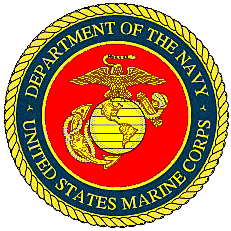Fri, Apr 18, 2003
Northrop Grumman Corporation's Integrated Systems sector
continued its successful flight testing of the U.S. Navy's RQ-8A
Fire Scout vertical takeoff and landing tactical unmanned aerial
vehicle in March with the first flight fully operated from the U.S.
Marine Corps' (USMC) S-788, a HMMWV-mounted ground control station
(GCS).

Conducted at the Webster Field annex of Naval Air Station
Patuxent River (MD), the flight fulfilled a key program test
objective of demonstrating Fire Scout operation by both U.S. Navy
and USMC ground control stations. (Fire Scout flew its first flight
operated by the Navy's S-280 GCS February 10.)
The S-788-operated flight was one of two Fire Scout flights
conducted on the same day. The first flight, a 20-minute
demonstration flight for senior U.S. Army aviation leadership, was
operated from the Navy's S-280 GCS. Less than an hour later, the
Fire Scout was launched for a functional check flight under the
control of the S-788 GCS. The back-to-back test flights marked the
first time that Fire Scout flights were operated from Marine Corps
and Navy ground control stations on the same day.

"The short turnaround time between flights and the ease of
switching from Navy ground control to Marine Corps ground control
provided a compelling demonstration of the robustness and
flexibility of the Fire Scout system design," said T. Scott
Winship, Northrop Grumman's Fire Scout program manager. "These test
results reinforce our confidence in Fire Scout's ability to provide
high-value support for critical Navy and Marine Corps
missions."
 During
the Marine Corps-controlled flight, the S-788 GCS used its tactical
control datalink to uplink payload command and control to Fire
Scout and to downlink imagery. The ARC-210 datalink was used for
air vehicle command and control. Use of this command and control
software continues to reduce risk as the system is prepared to
qualify and test the tactical control system software during flight
test later this spring.
During
the Marine Corps-controlled flight, the S-788 GCS used its tactical
control datalink to uplink payload command and control to Fire
Scout and to downlink imagery. The ARC-210 datalink was used for
air vehicle command and control. Use of this command and control
software continues to reduce risk as the system is prepared to
qualify and test the tactical control system software during flight
test later this spring.
As in all previous Fire Scout flight tests, the USMC and Navy
test flights were fully autonomous missions that included vertical
takeoff, accurate navigation, full payload operation and return to
a predetermined hover point in preparation for landing, all without
operator intervention.
More News
Aviation Governance Secured...At Least For a While The National Business Aviation Association similarly applauded the passage of the FAA's recent reauthorization, contentedly recou>[...]
Emphasis On Growing The Future of Aviation Through Concentration on 'AFFORDABLE FLYERS' It's been a number of years since the Latest Edition of Jim Campbell's HUGE SportPlane Resou>[...]
Amazilia Aerospace GmbH, Develops Digital Flight Control, Flight Guidance And Vehicle Management Systems Textron eAviation has acquired substantially all the assets of Amazilia Aer>[...]
Honeywell's Primus Brings New Tools and Niceties for Hawker Operators Hawker 4000 business jet operators have a new installation on the table, now that the FAA has granted an STC f>[...]
Company Celebrates Niche-but-Important Advancement in Industry Standards Echodyne has announced full integration of its proprietary 'EchoFlight' radar into the e American Aerospace>[...]
 Bolen Gives Congress a Rare Thumbs-Up
Bolen Gives Congress a Rare Thumbs-Up The SportPlane Resource Guide RETURNS!!!!
The SportPlane Resource Guide RETURNS!!!! Buying Sprees Continue: Textron eAviation Takes On Amazilia Aerospace
Buying Sprees Continue: Textron eAviation Takes On Amazilia Aerospace Hawker 4000 Bizjets Gain Nav System, Data Link STC
Hawker 4000 Bizjets Gain Nav System, Data Link STC Echodyne Gets BVLOS Waiver for AiRanger Aircraft
Echodyne Gets BVLOS Waiver for AiRanger Aircraft





